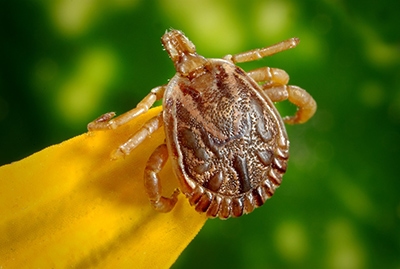Vet Buzz from Erin Troy, DVM, CCRP, CVPP, Muller Veterinary Hospital, Walnut Creek, CA
Osteoarthritis is a common disease in many dogs and can start as early as two years of age. It crosses all lines including gender, breed and size. Thankfully there are many options available to slow the progression of disease and ease the pain and decline in quality of life. These options include ideal weight management, medications, supplements, hydrotherapy, chiropractic care, acupuncture, LASER therapy, massage, magnetic therapy, TENS and appropriate exercise. In addition, joint injections can place an effective therapy at the site of the disease. A confirmed diagnosis is important and is most accurate with the use of radiographs.
One option for treating confirmed osteoarthritis is to inject the affected joint or joints with a product that decreases the pain and inflammation, and in some cases nourishes the joint itself in hopes of repairing or healing damaged tissues.
We have three options for products that can be injected to ease the pain in your pet’s joints. Platelet Rich Plasma ( PRP), Hyaluronic Acid (HA), and corticosteroids.
Platelet Rich Plasma
Platelet Rich Plasma (PRP) is considered a type of regenerative medicine similar to Stem Cell Therapy. When tissue is injured, the inflammatory response is triggered. This is necessary even though the heat and swelling are unpleasant. Inflammation stops the spread of infection and clears away damaged tissue. However, healing of the tissues cannot take place until the inflammation process is switched off.
The fact that platelets play a role in the control of both of these processes forms the rationale behind PRP treatment. Most everyone thinks of blood platelets as being responsible for blood clotting after injury, which is true. What many people do not know is that blood platelets serve two other important functions.
Blood platelets are responsible for bringing the white blood cells to the injured area to clean up the remains of dead and injured cells. Most importantly to this discussion, blood platelets release growth factors that are directly responsible for tissue regeneration. By ultimately inhibiting inflammation, platelets form part of the mechanism that switches the process off, and stimulates healing by producing the various tissue growth factors which stimulate new blood vessel growth. It is for these reasons that PRP treatment has been promoted for tendon, ligament, muscle, and joint injuries. PRP is derived from blood that is drawn from the patient and run through a special centrifuge, which separates the blood’s less dense components from its heavier ones. Plasma containing this concentrated level of platelets provides an abundance of growth factors, which are the proteins in the body that stimulate cells in the tendon, ligament, muscle, or joint to start the healing process.
When PRP is injected into damaged tendons or ligaments, cells in the tissue— along with new cells circulating in the blood—are stimulated to bring even more new cells to the injured site. Because the patient’s own blood is used to make the specialized plasma there is no risk of the treatment being rejected, as it might be if the blood had been provided by a donor.
Hyaluronic Acid
Hyaluronic acid is a naturally occurring fluid inside all joints. As a joint protective agent, HA is beneficial in lubricating joints, decreasing inflammation and degradation, and repairing cartilage. Intra-articular HA has been widely used to treat osteoarthritis in both animals and humans. Several experimental studies have demonstrated its effectiveness in treating dogs with osteoarthritis. The number of injections varies with the state of your dog’s osteoarthritis as well as what product is used. There are products designed for different species including man, horses and dogs. A large specialty referral hospital in Maryland published recent statistics showing the average positive response lasted 6 months. Other statistics from Vet Record included 70% responded well, 20% responded fair and 10% had no response.
Corticosteroids
Corticosteroids are also known as cortisone and are thought to be the strongest drug to control inflammation in the body. They exist in oral and topical and injectable forms. The oral forms can bring a long list of potential side effects. These are also seen if given in by injection in the muscle or under the skin. These should not be used in this way if a dog is on oral NSAIDs. Fewer side effects are seen with topical application, but this is not a recognized method of treating osteoarthritis. Injections of corticosteroids made directly into the joint are not known to have many side effects. This is an option that can be used after other treatment modalities are no longer as effective. Many dogs receive quick relief and the duration of effect can last weeks to months.
Many dogs benefit from a small dose of conscious sedation before the joint injection is performed and all can benefit from incorporating additional physical rehabilitation therapies directed at strengthening and pain management. These injections can be done by your primary care veterinarian or by a veterinarian trained in pain management.
The Gang. Photo Credit: Vicki Warwick (CC)







